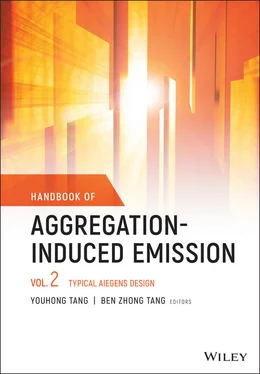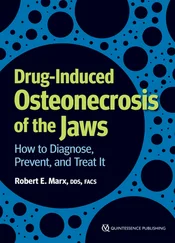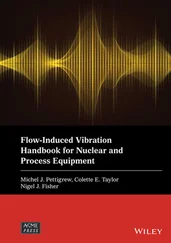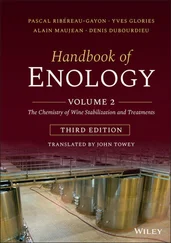5 5 Cohen MD, Flavian S. Topochemistry. Part XXIV. The luminescence properties of N‐salicylideneaniline and related anils in solution. J. Chem. Soc. B: Phys. Organ. 1967( 0):317–21.
6 6 Mei J, Leung NLC, Kwok RTK, Lam JWY, Tang BZ. Aggregation‐induced emission: together we shine, united we soar! Chem. Rev. 2015; 115(21):11718–940.
7 7 Tang W, Xiang Y, Tong A. Salicylaldehyde azines as fluorophores of aggregation‐induced emission enhancement characteristics. J. Org. Chem. 2009; 74(5):2163–66.
8 8 Li K, Wang X, Tong AA. “Turn‐on” fluorescent chemosensor for zinc ion with facile synthesis and application in live cell imaging. Anal. Chim. Acta. 2013; 776:69–73.
9 9 Cao X, Zeng X, Mu L, Chen Y, Wang R‐x, Zhang Y‐Q, et al. Characterization of the aggregation‐induced enhanced emission, sensing, and logic gate behavior of 2‐(1‐hydroxy‐2‐naphthyl)methylene hydrazone. Sens. Act. B. 2013; 177:493–9.
10 10 Wang Z, Zhou F, Gui C, Wang J, Zhao Z, Qin A, et al. Selective and sensitive fluorescent probes for metal ions based on AIE dots in aqueous media. J. Mater. Chem. C. 2018; 6(42):11261–5.
11 11 Chen X, Li Z, Xiang Y, Tong A. Salicylaldehyde fluorescein hydrazone: a colorimetric logic chemosensor for pH and Cu(II). Tetrahed. Lett. 2008; 49(32):4697–700.
12 12 Kang Y, Liao Z, Wu M, Li S, Fang D‐C, Zheng X‐J, et al. Photophysical properties of a D–π–A Schiff base and its applications in the detection of metal ions. Dalton Trans. 2018; 47(38):13730–8.
13 13 Song P, Xiang Y, Wei RR, Tong A. A fluorescent chemosensor for Cu2+ detection in solution based on aggregation‐induced emission and its application in fabricating Cu2+ test papers. J. Lumin. 2014; 153:215–20.
14 14 Liu B, Zhou H, Yang B, Hu X. Aggregation‐induced emission activity and further Cu2+‐induced self‐assembly process of two Schiff compounds. Sens. Actuat. B. 2017; 246:554–62.
15 15 Huang G, Wen R, Wang Z, Li BS, Tang BZ. Novel chiral aggregation induced emission molecules: self‐assembly, circularly polarized luminescence and copper(II) ion detection. Mater. Chem. Front. 2018; 2(10):1884–92.
16 16 Chen X, Yamaguchi A, Namekawa M, Kamijo T, Teramae N, Tong A. Functionalization of mesoporous silica membrane with a Schiff base fluorophore for Cu(II) ion sensing. Anal. Chim. Acta. 2011; 696(1–2):94–100.
17 17 Gao M, Li Y, Chen X, Li S, Ren L, Tang BZ. Aggregation‐induced emission probe for light‐up and in situ detection of calcium ions at high concentration. ACS Appl. Mater. Interf. 2018; 10(17):14410–7.
18 18 Yang M, Zhang Y, Zhu W, Wang H, Huang J, Cheng L, et al. Difunctional chemosensor for Cu(II) and Zn(II) based on Schiff base modified anthryl derivative with aggregation‐induced emission enhancement and piezochromic characteristics. J. Mater. Chem. C. 2015; 3(9):1994–2002.
19 19 Wang X, Ma H, Ding G, Lu Y, Gong Y, Zhang S, et al. New armed near‐IR two‐photon organic chromophores undergoing ESIPT and 'naked eye' fluorescence sensing to zinc ions. Tetrahed. Lett. 2015; 56(21):2758–63.
20 20 Shellaiah M, Wu Y‐H, Singh A, Ramakrishnam Raju MV, Lin H‐C. Novel pyrene‐ and anthracene‐based Schiff base derivatives as Cu2+ and Fe3+ fluorescence turn‐on sensors and for aggregation induced emissions. J. Mater. Chem. A. 2013; 1(4):1310–8.
21 21 Pasha SS, Yadav HR, Roy Choudhury A, Laskar IR. Synthesis of an aggregation‐induced emission (AIE) active salicylaldehyde based Schiff base: study of mechanoluminescence and sensitive Zn(II) sensing. J. Mater. Chem. C. 2017; 5(37):9651–8.
22 22 Liu H, Dong Y, Zhang B, Liu F, Tan C, Tan Y, et al. An efficient quinoline‐based fluorescence sensor for zinc(II) and its application in live‐cell imaging. Sens. Actuat. B. 2016; 234:616–24.
23 23 Li N, Xiang Y, Tong A. Highly sensitive and selective “turn‐on” fluorescent chemodosimeter for Cu2+ in water via Cu2+‐promoted hydrolysis of lactone moiety in coumarin. Chem. Commun. 2010; 46(19):3363–5.
24 24 Li K, Tong A. A new fluorescent chemosensor for Zn2+ with facile synthesis: “turn‐on” response in water at neutral pH and its application for live cell imaging. Sens. Actuat. B: Chem. 2013; 184:248–53.
25 25 Kumar G, Paul K, Luxami V. Aggregation induced emission‐excited state intramolecular proton transfer based “off–on” fluorescent sensor for Al3+ ions in liquid and solid state. Sens. Actuat. B. 2018; 263:585–93.
26 26 Peng L, Zhou Z, Wang X, Wei R, Li K, Xiang Y, et al. A ratiometric fluorescent chemosensor for Al3+ in aqueous solution based on aggregation‐induced emission and its application in live‐cell imaging. Anal. Chim. Acta. 2014; 829:54–9.
27 27 Li N, Xiang Y, Chen X, Tong A. Salicylaldehyde hydrazones as fluorescent probes for zinc ion in aqueous solution of physiological pH. Talanta 2009; 79(2):327–32.
28 28 Li N, Tang W, Xiang Y, Tong A, Jin P, Ju Y. Fluorescent salicylaldehyde hydrazone as selective chemosensor for Zn2+ in aqueous ethanol: a ratiometric approach. Luminescence 2010; 25(6):445–51.
29 29 Li K, Li N, Chen X, Tong A. A ratiometric fluorescent chemodosimeter for Cu(II) in water with high selectivity and sensitivity. Analy. Chim. Acta. 2012; 712:115–9.
30 30 Zhang R, Gao M, Bai S, Liu B. A fluorescent light‐up platform with “AIE + ESIPT” characteristics for multi‐target detection both in solution and on paper strip. J. Mater. Chem. B. 2015; 3(8):1590–6.
31 31 Alam P, Kachwal V, Rahaman Laskar I. A multi‐stimuli responsive “AIE” active salicylaldehyde‐based Schiff base for sensitive detection of fluoride. Sens. Actuat. B. 2016; 228:539–50.
32 32 Chen X, He L, Wang Y, Liu B, Tang Y. Trace analysis of uranyl ion (UO22+) in aqueous solution by fluorescence turn‐on detection via aggregation induced emission enhancement effect. Anal. Chim. Acta. 2014; 847:55–60.
33 33 Gong W‐T, Zhang Q‐L, Shang L, Gao B, Ning G‐L. A new principle for selective sensing cyanide anions based on 2‐hydroxy‐naphthaldeazine compound. Sens. Actuat. B. 2013; 177:322–6.
34 34 Liang C, Jiang S. Fluorescence light‐up detection of cyanide in water based on cyclization reaction followed by ESIPT and AIEE. Analyst (Cambridge, UK) 2017; 142(24):4825–33.
35 35 Pham X‐Q, Kumar N, Ha‐Thi M‐H, Leray I. Sensitive and selective detection of uranyl ions based on aggregate‐breaking mechanism. J. Photochem. Photobiol. A. 2019; 373:139–45.
36 36 Wang Z, Zhou F, Wang J, Zhao Z, Qin A, Yu Z, et al. Electronic effect on the optical properties and sensing ability of AIEgens with ESIPT process based on salicylaldehyde azine. Sci. China: Chem. 2018; 61(1):76–87.
37 37 Xie Y, Yan L, Tang Y, Tang M, Wang S, Bi L, et al. A smart fluorescent probe based on salicylaldehyde Schiff's base with AIE and ESIPT characteristics for the detections of N2H4 and ClO. J. Fluoresc. 2019; 29(2):399–406.
38 38 Liu L, Wu B, Yu P, Zhuo R‐X, Huang S‐W. Sub‐20 nm nontoxic aggregation‐induced emission micellar fluorescent light‐up probe for highly specific and sensitive mitochondrial imaging of hydrogen sulfide. Polym. Chem. 2015; 6(29):5185–9.
39 39 Liu H, Wei R, Xiang Y, Tong A. Fluorescence turn‐on detection of pyrophosphate based on aggregation‐induced emission property of 5‐chlorosalicylaldehyde azine. Anal. Meth. 2015; 7(2):753–8.
40 40 Liu H, Wang X, Xiang Y, Tong A. Fluorescence turn‐on detection of cysteine over homocysteine and glutathione based on “ESIPT” and “AIE”. Anal. Meth. 2015; 7(12):5028–33.
41 41 Song H, Zhou Y, Qu H, Xu C, Wang X, Liu X, et al. A novel AIE plus ESIPT fluorescent probe with a large Stokes shift for cysteine and homocysteine: application in cell imaging and portable kit. Ind. Eng. Chem. Res. 2018; 57(44):15216–23.
Читать дальше












